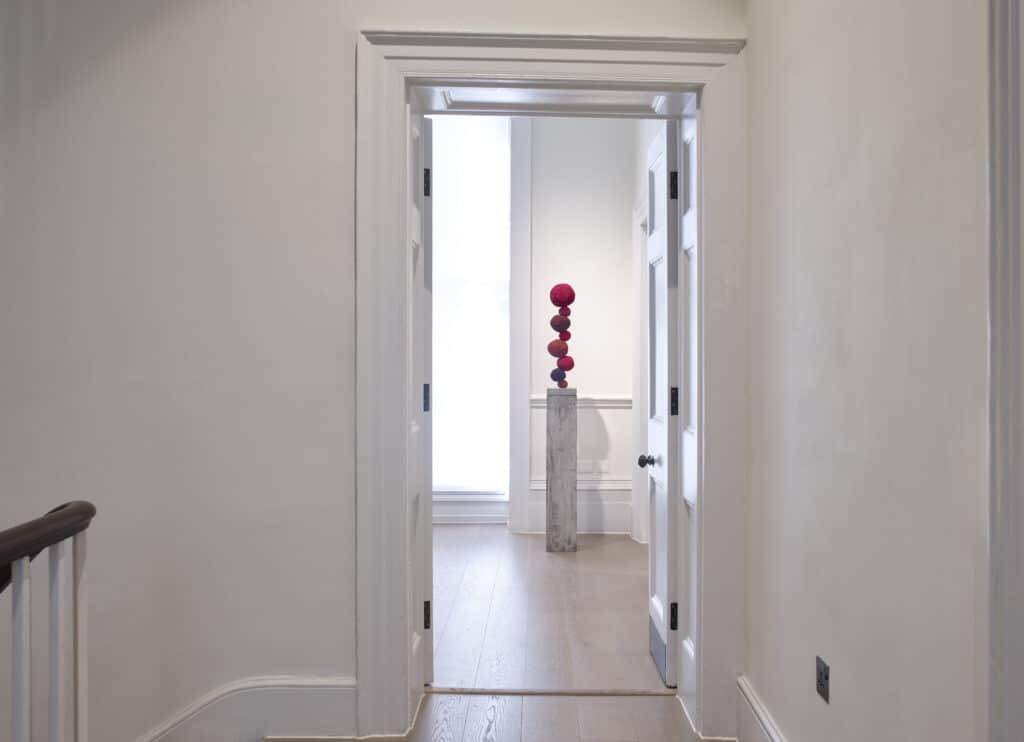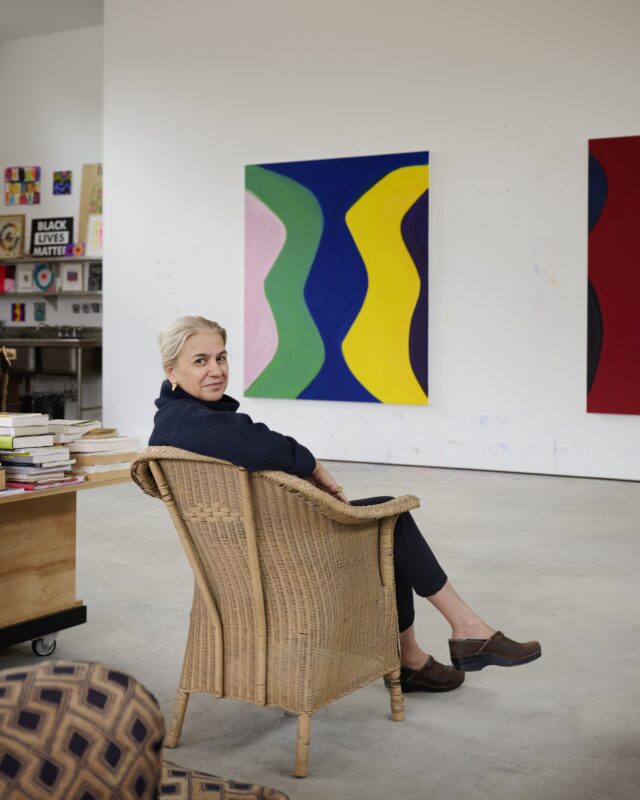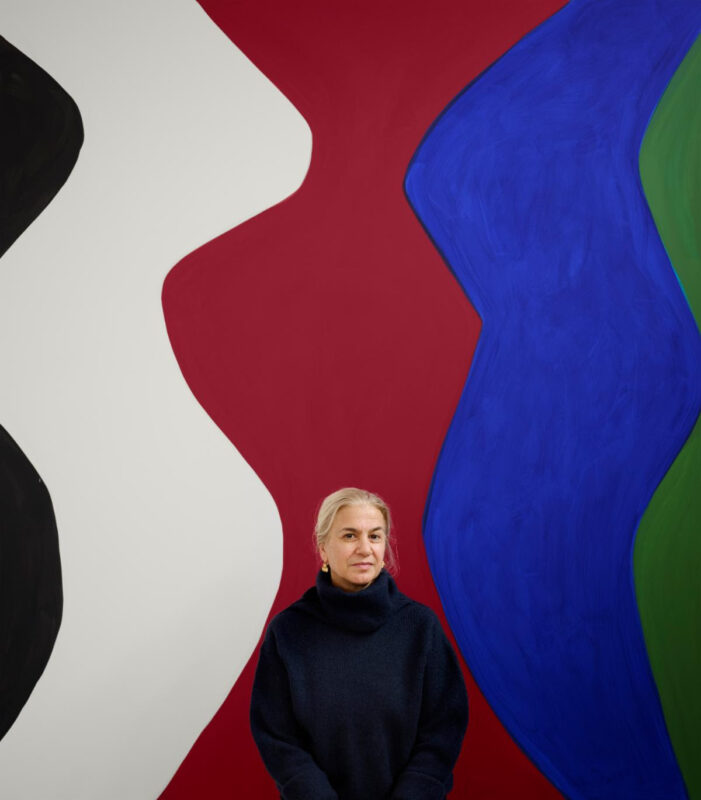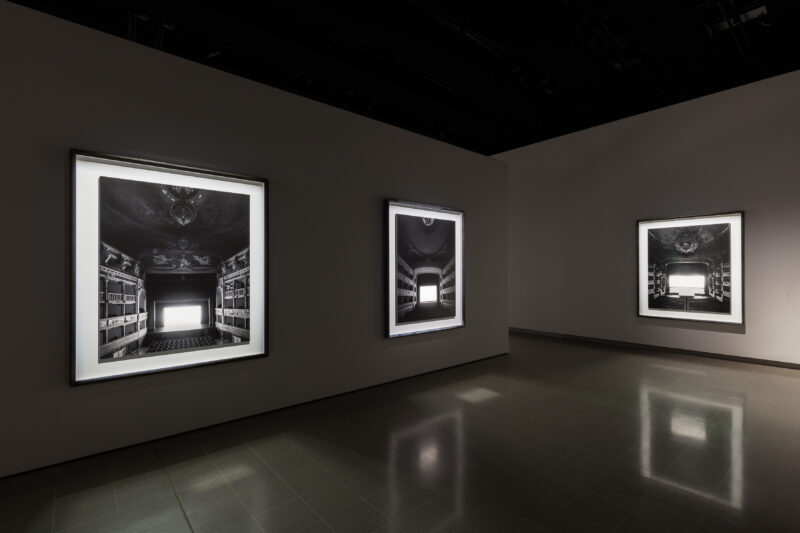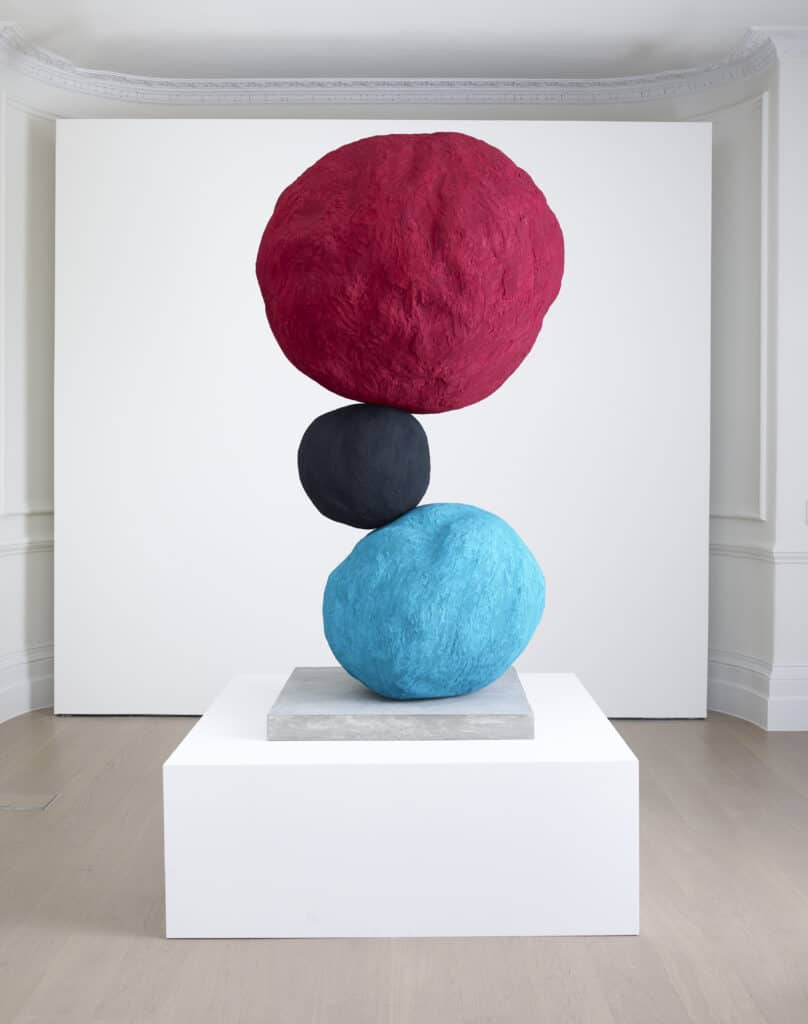
A towering blue figure consisting of nine balls marks the entrance to a carefully curated Annie Morris wonderland. The first sculpture’s scale is staggering, and its varying shades of blue command attention. It was early on a cloudy and drizzling Tuesday morning, so when I opened the door to Timothy Taylor Gallery, I’ll admit, my mind was a bit muddled. But after a quick look at Stack 9, Ultramarine Blue, I was officially awake. The rest of the exhibition initially seemed to follow a similarly vibrant pattern with nine more bright spherical stacks confronting one another upstairs.
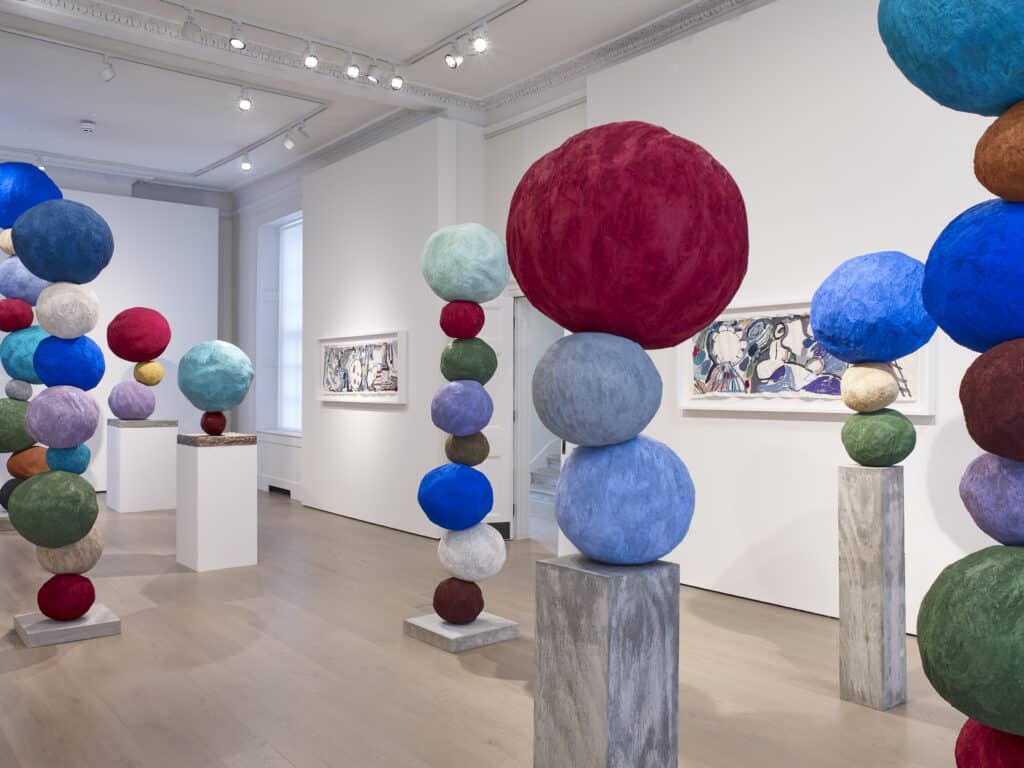
Perhaps I wasn’t really fully awake yet, or maybe Frieze week had gotten the better of me, but there was something about the works that interrupted the routine involvement associated with reading an exhibition room. Between the sculptures’ rich jewel toned paints, their scale (both in physical size and quantity), and their proximity to one another, I began to feel almost as though I was losing my balance. This, though, only added to my experience; the sculptures transport you into a space where it is just you and them. The other exhibition goers seem to disappear (or you’re no longer conscious of them,) the sounds of central London outside are silenced and you’re left alone with racing thoughts, quiet breaths and careful steps. In a matter of seconds, the room becomes one consisting solely of you and the body of work—the parts of this body clamouring for your undivided attention.
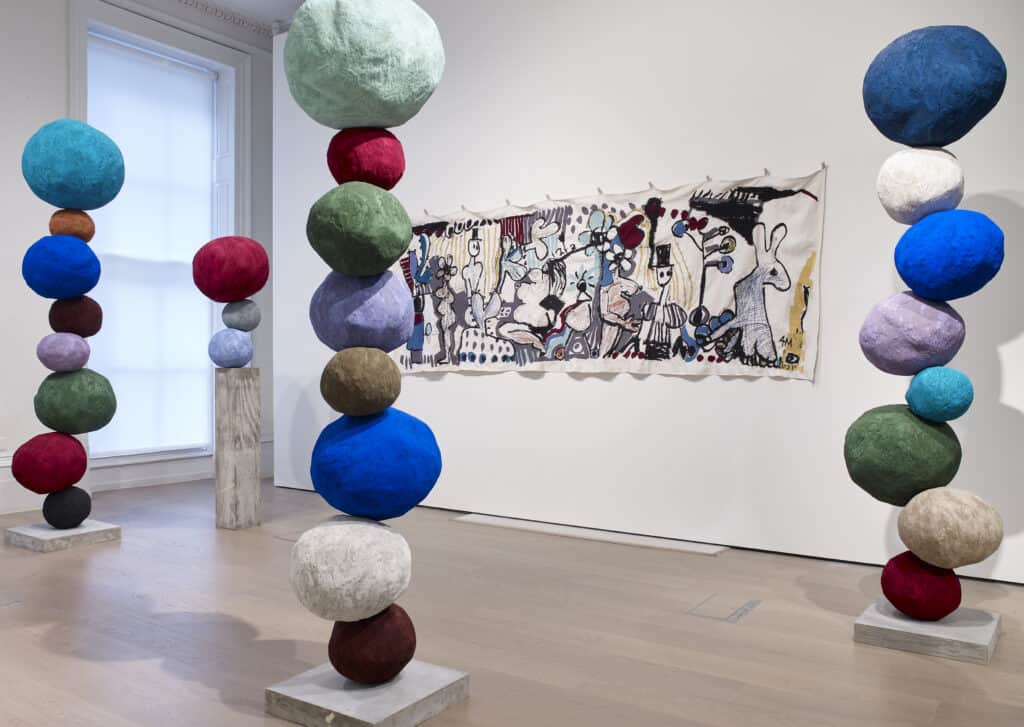
I carefully made my way through this maze, paying extra close attention, in my altered mental state, not to actually, physically wobble and bump into any of the works. There was a looming sense, though, that no matter how careful one was, a sculpture would inevitably start to teeter, then fall, and someone would be stuck paying for the damage. The totemic orbs appear to be just perfectly balanced on top of each other as a sort of experimental balancing act. This physical precariousness mimics an angsty uncertainty that has always existed, and recently, (thanks to Covid-19) has come to define our lives. Will a loved one get sick with Covid-19? Will I lose my job? Are my children safe in school? Will my partner lose their job? Can I walk home safely? Can my child walk home safely? Has another person been sexually assaulted?
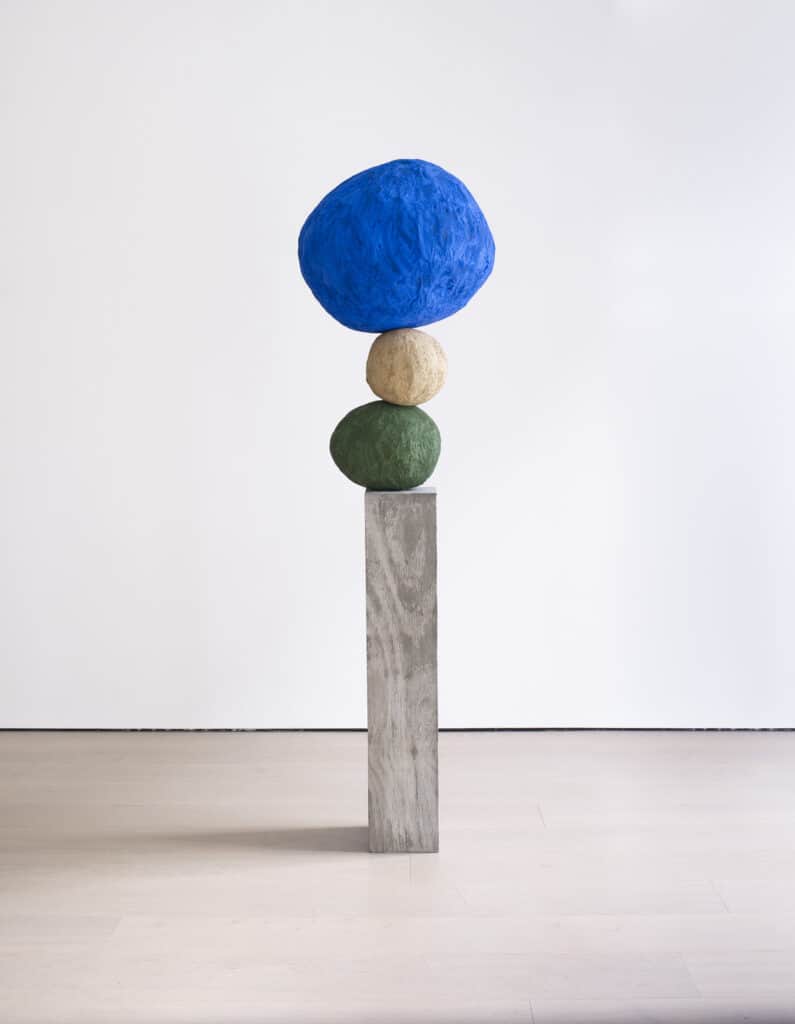
Tragically, Morris had her own very personal confrontation with the fragility of human existence when she gave birth to a stillborn baby. “The sculptures began after losing the baby as a way to hold on to the shape I had lost.” Needless to say, the sheer horror of this experience changed the course of the artist’s life and work forever, but her story did not end there. Because, the sculptures also represent life continuing, the initial sharp and all-consuming pain of a traumatic event receding, the idea that beauty can be born from uncertainty; and ultimately, they are a testament to finding an inevitable light in the darkness.
Morris’ willingness to (very bravely) be so honest and vulnerable contextualizes her pieces so what at first appears to be an abstract sculpture becomes an autobiography. Whilst the idea behind these tall, spherical bursts of colour was born in tragedy… their prevailing sense of hope is just as infectious as the artist’s smile.
Annie Morris at Timothy Tayor – 13th November 2021, London
